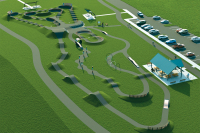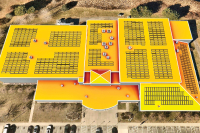‘Hazelwood haircut’ is a destructive practice
To the Editor:
I wanted to reply to the “Did That Used to be a Tree?” article in the June 5-11 paper. I have worked in the natural resources community for a number of years, and nowhere have I seen the amount of tree-topping as in Haywood County. When you cut off all the branches of a tree, you are accomplishing several things: reducing your property value; encouraging new, weak growth that will be more likely to fall than the original branches; encouraging disease and decay to sicken and weaken the tree, which will hasten its death; and wasting your money. If you are worried about tree branches falling on your house or your power lines, then you should replace the tree with a native tree or shrub that fits into the space available, such as a flowering dogwood. What follows is an excerpt from an article that I published in the Carolina Country magazine on this very topic:
Many homeowners think that topping a tree reduces the height of the tree and helps to prevent hazards. Unfortunately, exactly the opposite is true. Instead of tree topping becoming a simple, inexpensive solution, it magnifies the problem and costs the landowner in additional ways.
When a tree has no leaves, its food production source is removed, and it must tap into energy reserves in order to prevent starvation. Numerous small branches will form near the end of each stub in order to produce as many leaves as quickly as possible. This rapid new growth not only increases the height of the tree, but also the branch density, making the tree taller and fuller than before. These new branches are weakly attached and prone to breakage in windy or icy conditions — a liability for which the landowner is financially responsible.
Topping a tree causes stress in other ways, as well. Newly revealed tissues may become sunburned — possibly resulting in cankers, splitting bark, and even death of the branches. Large wounds and long stubs close slowly and are prone to decay and insect invasion. These factors combine to shorten the life of the tree and cost the landowner in terms of tree maintenance and removal.
Removing tree branches leaves a disfigured, aesthetically displeasing tree. Because of the rapid new growth, the tree will need to be regularly pruned. While healthy trees can add 10 to 20 percent to the value of a home, topped trees decrease a home’s value as potential buyers are faced with future tree maintenance.
There are several alternative approved and healthy methods for managing your trees. First, be sure when planting a tree that it is the right tree for that place. There should be adequate space for the mature tree, including the height and diameter of the crown (the branches and leaves extending from the main stem of the tree), as well as the roots. In the long run, it may be worthwhile to replace a mature ill-fitting tree with a smaller tree that is right for that space.
The “Hazelwood Haircut” is really just a cute name for a horrible and harmful practice that no certified arborist or tree service would ever recommend or perform. It is much wiser — and more cost-effective — to replace the tree. For more information about native plants that will fit your landscape, visit www.ncsu.edu/goingnative.
Amy Ney
Canton





